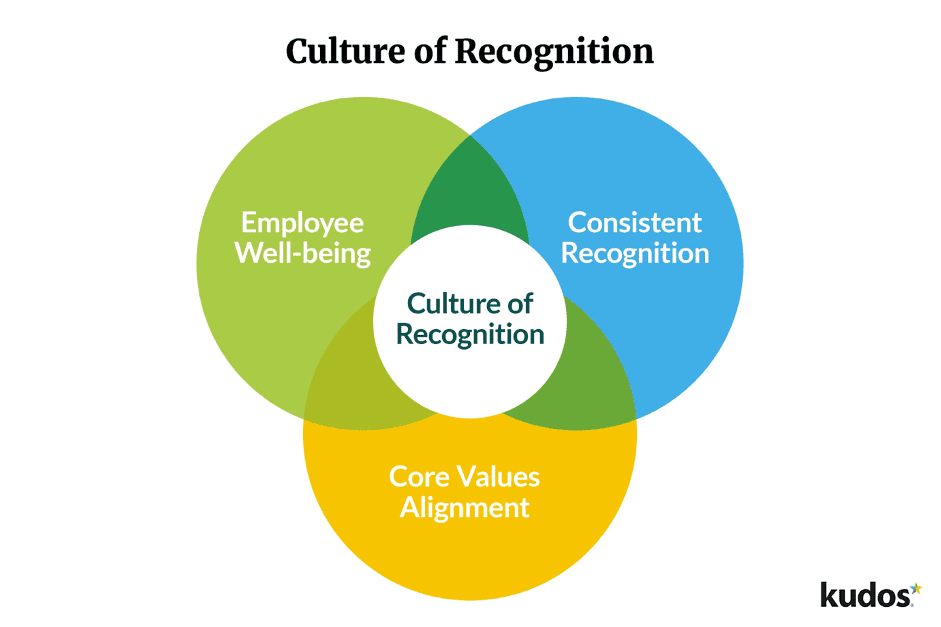Since the start of the pandemic, the only constant with the job market is change.
From massive layoffs during the peak of COVID in 2020 to “The Great Resignation” in 2021, and now “Quiet Quitting” and a potential economic slowdown in 2022, it hasn’t been smooth sailing.
So how do you navigate these choppy seas? Do you change up your hiring strategy? Offer better benefits? Or invest in your current employees to keep them happy and engaged?
Unfortunately, there’s no one-size-fits-all answer. But on the bright side, recent workplace studies can help point you in the right direction.
For example, research shows that over 80% of employees feel motivated to work harder when they are recognized for their efforts by their superiors.
You may have also heard that employee recognition programs can help improve your workplace culture and boost the bottom line. That sounds idyllic. But do you know why that is?
In this article, we’ll explore some of the main reasons investing in employee-focused programs is a bulletproof idea that works surprisingly well in both turbulent and calm job markets.
Let’s dive in.
Cost-Effective Retention Strategy
It can cost a whooping one-half to two times an employee’s annual pay to replace them. And that’s a conservative estimate, according to Gallup.
Add that cost to a tight labor market with a possible recession ahead, and that spells trouble for any organization that’s on the verge of losing their best people. Sadly, it’s more than just about the money.
Losing your best talent means losing people who inspire others with their energy, who are always looking for new ways to solve problems, and who are tenacious when finding solutions.
It’s disruptive to your team and detrimental to your company culture. It can also result in lost customer relationships and tarnish your brand reputation — all things you want to avoid.
So how do you keep your best employees without breaking the bank? It all comes down to recognizing their hard work and showing appreciation for their efforts.
Remember that different types of personalities react differently to different kinds of recognition. Employees with INFJ personalities are naturally more introverted and would feel more comfortable receiving an award directly or in private rather than in team meetings. They also might not require recognition as regularly as other personality types.
That said, there’s no one-size-fits-all in creating an employee recognition program. Let’s look at a few cost-effective ideas for an effective employee recognition program.
Start with a free and easy way to show recognition to your employees through social media, like this LinkedIn post from the CEO at uSERP congratulating four employees on their recent promotions.

You can use many free online design tools to make your posts stand out even more. For instance, Quicktools by Picsart offers a wide range of creative tools to edit images and enhance videos that come in handy when working on these kinds of projects.
You can also follow Starbucks’ lead on this one. They have a dedicated page for sharing posts to recognize their employees.

Moving upwards into the next budget tier, you can implement an employee reward program tailored to each employee by offering small personalized gifts for a job well done.
Suppose you hear your employees talking about video games or their favorite sports teams. You can reward them with a Steam gift card for their favorite PC games or a subscription to satellite tv packages with the best sports channels.
These little gifts aren’t overly expensive, but the personalization shows your employees that you care about their lives outside of work (and that you pay attention to their interests).
While you’re at it, offering benefits that extend to their family is another excellent way to show that you care. Instead of giving gifts only to them, consider offering to contribute to other family benefits like adding pre-tax dollars to their health savings account (HSA).
Don’t forget to include other educational information on your benefits websites, like how parents can start saving for their children’s college tuition with a 529 plan and the specific age requirements for getting a debit card.
Don’t underestimate the power of small gestures. Little things go a long way with employee recognition. A simple thank you email can make someone’s day and encourage them to continue to work hard.
Improving Workplace Culture
Employee recognition programs are the key to the health and well-being of any company. They help identify, develop and retain top talent, which is crucial for long-term business success.
But why? What is it about employee recognition programs that makes them so valuable?
Employee recognition programs tell your workers that you value their hard work and dedication. This can lead to better retention rates, improved productivity, fewer employee turnover issues, and a robust company culture.
Showing employees that they are valued boosts morale and helps attract new hires who want to work for companies that value their employees.
A good employee recognition program gives employees opportunities to learn new skills and advance in their careers while providing positive reinforcement when they do well at work.
These opportunities help create a culture of growth within your company, resulting in happier employees who are more committed to their jobs and more motivated to succeed.

It’s also important to recognize your employees’ sacrifices for their job, especially during big career moves.
If you require an employee to transfer to a different part of the country after a promotion, there are various costs (financial and emotional) associated with this career transition. It’s fair to cover their relocation expenses and recognize their sacrifice with a bonus or additional time off.
Creating a culture that recognizes and rewards employee achievement allows your employees to feel like they are part of something bigger and feel connected and engaged with their work environment.
Make it easier for yourself to understand when an employee deserves recognition by investing in the appropriate technology tools that help measure your employee performance.
For example, if you run a transportation and logistics company, fleet management software can help track drivers and understand who’s consistently showing up on time and who is falling behind.
Now you have precise data to help you establish performance goals and recognize employees that go the extra mile (pun intended).
To create a culture of appreciation, you must weave recognition into the everyday fabric of your organization.
Overall Benefit to the Bottom Line
Employee retention is a critical factor for the success of your business. Investing in your employees increases happiness, reduces burnout, and results in higher productivity, leading to greater returns for your company.
But it’s not just about giving employees a paycheck and a pat on the back. You need to know what motivates them and how you can help them succeed.
Through an employee retention program, you can gain access to valuable employee feedback that’ll help you improve your business practices.
This feedback can also provide training and upskilling opportunities for employees that’ll benefit the business in the long run.
For example, once you find the spark that ignites their fire, keep it burning by using motivational speakers to keep morale high while simultaneously educating them on new skill sets.
When you invest in employee recognition programs, you’re not only saving yourself the cost of constantly hiring and training new employees, but you also keep top talent.

With the proper programs in place, you can provide your high performing employees with training opportunities that help them grow within their current roles and expand their knowledge base. Think of it as adding fuel to the fire (in a good way).
Your employees are the lifeline of your business. Without them, your business goes bust. Praise them often, especially when they go above and beyond. You won’t regret it.
Wrapping up
The key takeaway is that employee recognition programs are an excellent way to reward employees for their hard work and improve workplace culture.
They cost little to implement and can be used in various ways, from small gestures such as public praise, sending flowers, or giving away free lunches to bigger prizes like company retreats or even financial bonuses.
Invest in an employee recognition program today to keep your best people around and grow your bottom line for years to come.



